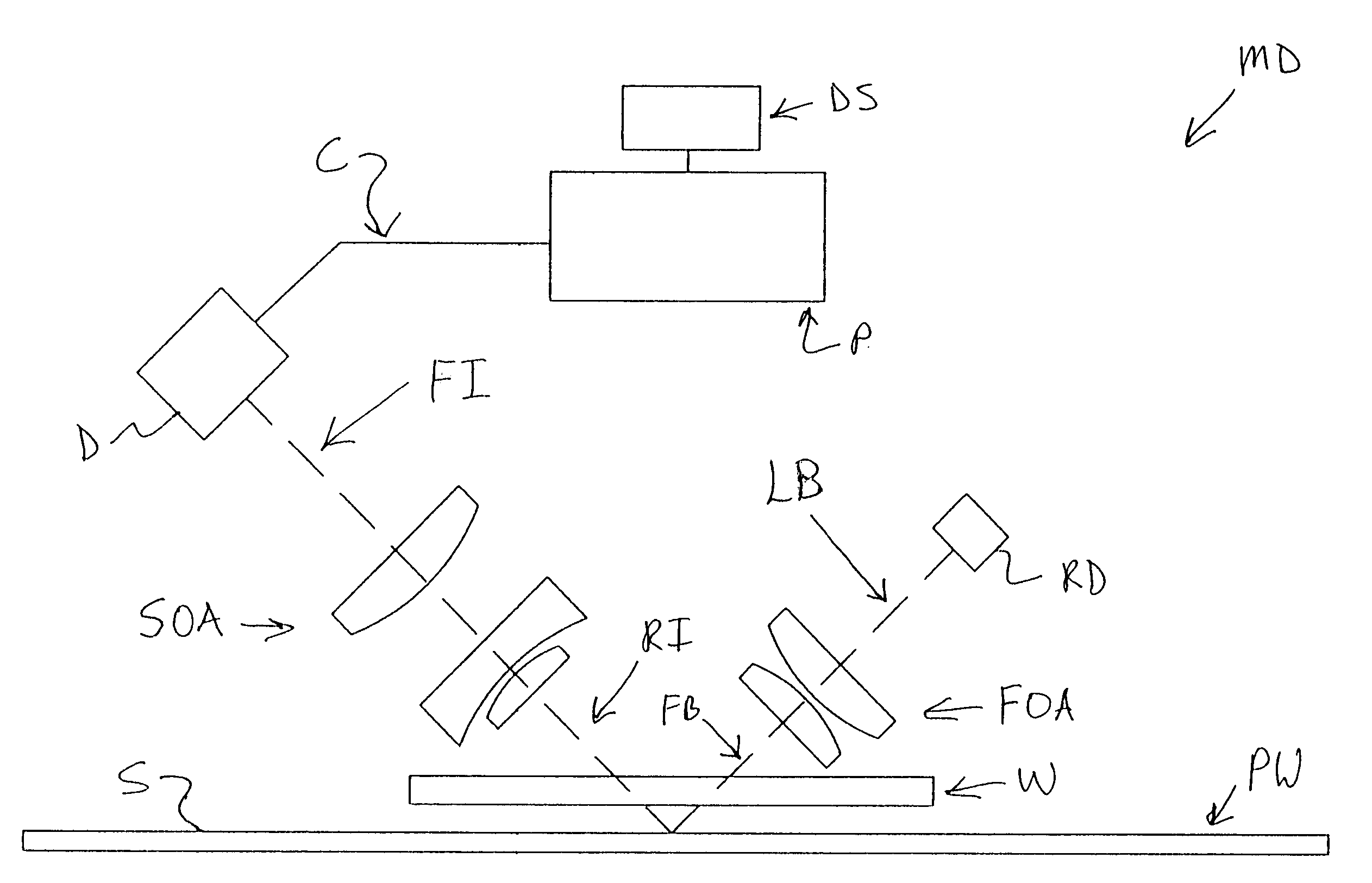Optical triangulation device and method of measuring a variable of a web using the device
a triangulation device and web technology, applied in measurement devices, instruments, scientific instruments, etc., can solve problems such as high frequency variations, holes or tears, and devices with parts, and achieve the effect of avoiding inaccuracy and high frequency variations
- Summary
- Abstract
- Description
- Claims
- Application Information
AI Technical Summary
Benefits of technology
Problems solved by technology
Method used
Image
Examples
Embodiment Construction
[0051]The particulars shown herein are by way of example and for purposes of illustrative discussion of the embodiments of the present invention only and are presented in the cause of providing what is believed to be the most useful and readily understood description of the principles and conceptual aspects of the present invention. In this regard, no attempt is made to show structural details of the present invention in more detail than is necessary for the fundamental understanding of the present invention, the description is taken with the drawings making apparent to those skilled in the art how the forms of the present invention may be embodied in practice.
[0052]FIG. 1 shows one non-limiting embodiment of a measuring device MD according to the invention. The device MD includes electromagnetic radiation producing device RD which can have the form of, e.g., a laser, a laser diode, or an incandescent bulb with a pinhole aperture. A laser light source is preferred because of its rel...
PUM
 Login to View More
Login to View More Abstract
Description
Claims
Application Information
 Login to View More
Login to View More - R&D
- Intellectual Property
- Life Sciences
- Materials
- Tech Scout
- Unparalleled Data Quality
- Higher Quality Content
- 60% Fewer Hallucinations
Browse by: Latest US Patents, China's latest patents, Technical Efficacy Thesaurus, Application Domain, Technology Topic, Popular Technical Reports.
© 2025 PatSnap. All rights reserved.Legal|Privacy policy|Modern Slavery Act Transparency Statement|Sitemap|About US| Contact US: help@patsnap.com



